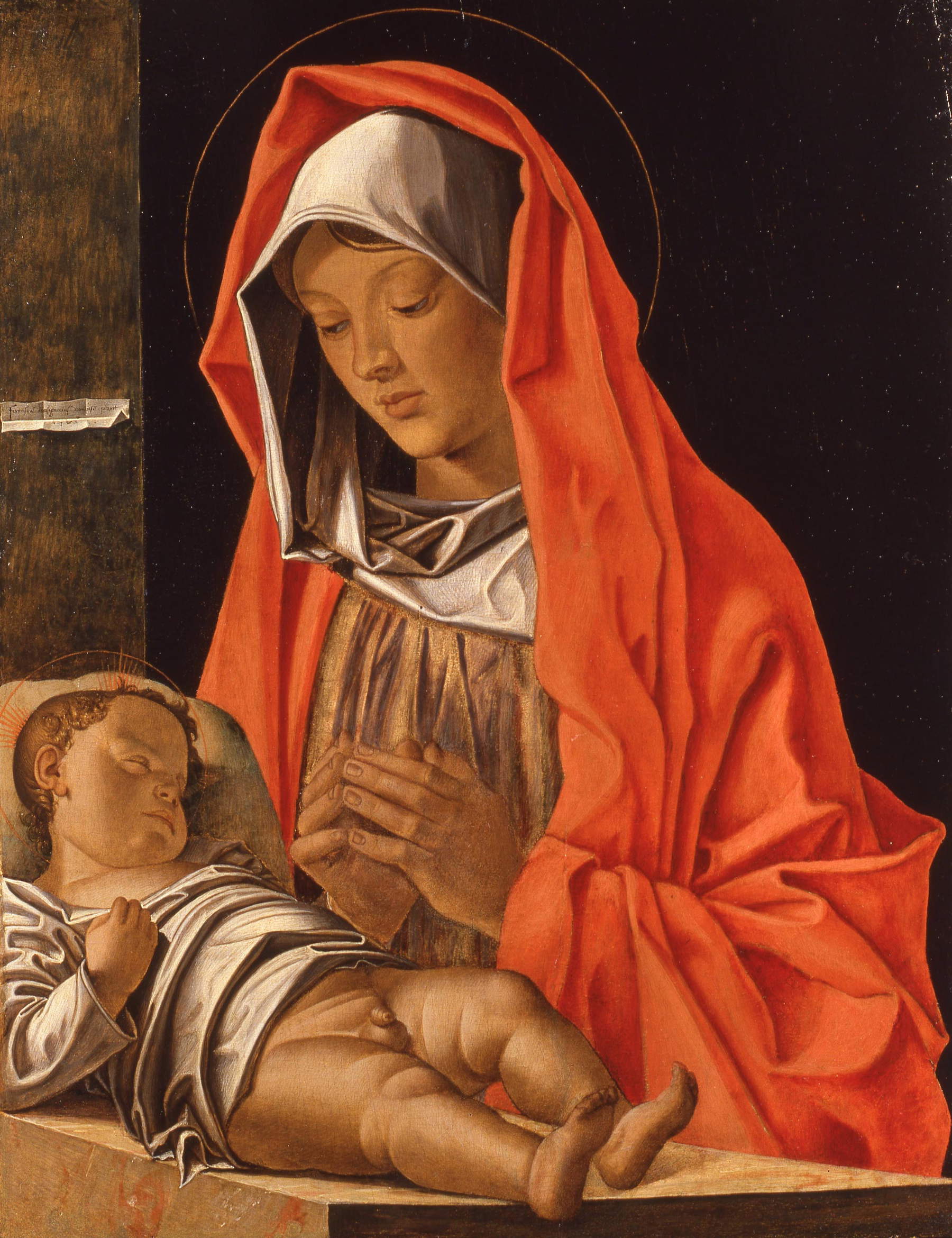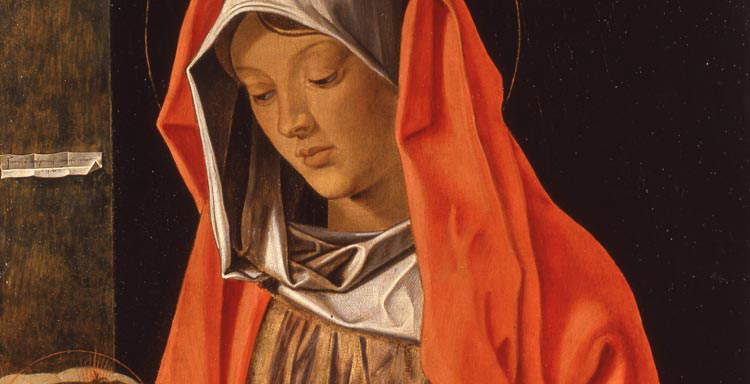The author, active in Verona in the second half of the 15th century, is named Francesco Bonsignori. The painting, preserved in the Castelvecchio Museum in Verona, is signed, and dated 1483. It depicts a Madonna and Child. At first glance it would look like any Madonna; if you look at it, however, with a little more attention you will notice two or three very unusual things. The Child sleeps on a marble slab, which is completely improbable in a naturalistic painting: no child can sleep on a cold, hard stone. Not only that: but he sleeps in a robe that leaves his lower body and sexual organs completely uncovered. The latter, moreover, seem to be protected by Our Lady’s clasped hands. What does this painting mean? How come the Child sleeps on a marble slab and Our Lady’s hands are placed in such a relationship with her son’s body? To fully understand the meaning of the painting one would need to see the original or at least possess a good color reproduction of it. One would then realize that the marble on which the Child sleeps is reddish and veined with white. This is the same marble that reappears in a very famous Brera painting: the Dead Christ by Mantegna. What is the significance of this red stone spotted with white? Meanwhile, notice that the Child is lying down: he is sleeping in an almost rigid attitude, as if he were dead. Actually, the red stone stained with white is the so-called Anointing Stone, one of the most sacred relics of Christianity that, until the 12th century, was in the Basilica of the Holy Sepulcher in Jerusalem.

In the 12th century, this highly venerated relic was taken to Constantinople and its fate is unknown. But to Italian artists of the 15th century it must have been well known. Perhaps it still exists; perhaps it was stolen in the sack of Constantinople in 1204, brought to Italy and lost. Who knows whether it still exists, unidentified, in some Italian sacred building. In Jerusalem, the Anointing Stone has been replaced by a copy, and is located exactly halfway between Calvary and the Holy Sepulcher. According to tradition, it would be the stone on which Christ’s body was placed after the deposition from the cross at the time of being anointed, before being wrapped in the shroud and being buried. That is why it was called the Anointing Stone. According to the same legend, the stone was originally red; but Our Lady’s tears, indelibly, would vein it white. These are the veins, on the red, seen in both the Bonsignori and the Mantegna paintings. In the latter the Virgin weeps at the stone, and the reference to the legend is much more precise.
After this clarification one can understand what Bonsignori’s painting means. It is based on that rhetorical figure called prolexi: the representation of an object, or an episode, that anticipates the final fate of the story. We have here the Madonna with the still small Child; but the Child sleeps in the same position as the dead Christ after the Passion. So the picture has a double meaning: it is the Madonna and Child and, at the same time, Christ the Redeemer anticipating, lying as he is on a stone that will later be the Stone of Anointing, his own death. But why is the lower part of the Child’s body naked? The detail signifies that God was incarnated in Christ as true man.
In the late fifteenth century, many theologians who wrote sermons for the papal court, especially for Innocence VIII, Sixtus IV and Julius II, insisted on the second person of the Trinity, which they believed was almost more important than the other two. While the creation of the world, according to them, was somewhat imperfect, because it made man without the possibility of redemption, more perfect was the incarnation, in that it gave man the possibility of redemption; there was, in short, something more than the original creation. Bonsignori’s painting, in emphasizing sex, represents Christ as true man. These are concepts that to us, today, accustomed to the Counter-Reformation mentality and its sexophobia, may seem ungodly; but you see that Our Lady protects her son precisely by reaching her hands in sign of prayer over his most delicate part, that is, the sexual organs. It is known that the human body in painting, but also in philosophy, is polarized. The upper part, from the navel upward, is the noble part; the lower part, from the navel downward, is the ignoble part, the carnal part, the part where the urges that must be repressed lurk. Thus, in Bonsignori’s painting the lower part is precisely exalted, as a sign of the Incarnation.
---
Federico Zeri, Behind the Image. Conversations on the Art of Reading Art, Neri Pozza Editore, Vicenza, 1998 [original edition: Longanesi & C., Milan, 1987], pp. 13-15
 |
| Supercult. Federico Zeri on Francesco Bonsignori |
Warning: the translation into English of the original Italian article was created using automatic tools. We undertake to review all articles, but we do not guarantee the total absence of inaccuracies in the translation due to the program. You can find the original by clicking on the ITA button. If you find any mistake,please contact us.